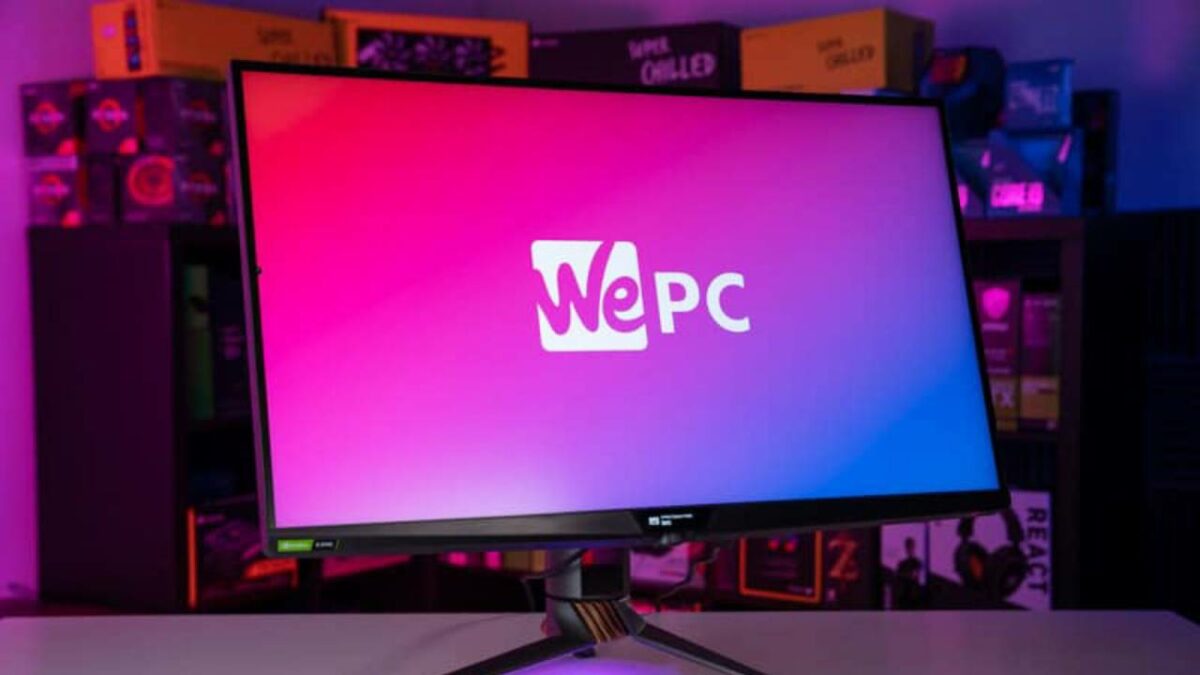
Pick out a super gaming monitor for your RTX 4070 Super
Updated: Jan 16, 2024 4:31 pm
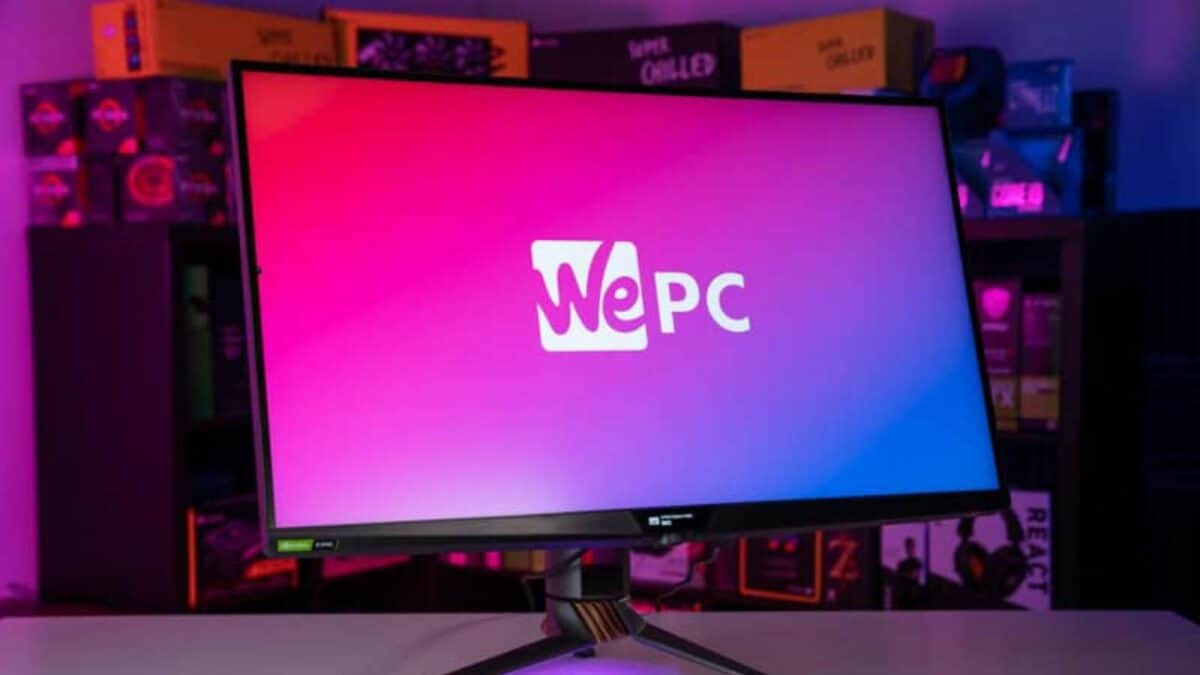
WePC is reader-supported. When you buy through links on our site, we may earn an affiliate commission. Prices subject to change. Learn more
We’ve been looking forward to the RTX 4070 Super release date for a while now, and now the time has come to pick out the best gaming monitor for RTX 4070 Super. This super refresh of the mid-range 4070 offers better performance thanks to the improved specs. Nvidia still target this card at the 1440p range, but we can stretch to 4K without too many worries if you don’t mind taking a hit on performance. Right off the bat, we’d recommend the Corsair Xeneon 27QHD240 as our top pick, or the Alienware AW3821DW if you want to go ultrawide.
There’s more to come though, and if you’re already looking to buy an RTX 4070 Super, choosing the right monitor to pair it with should be next on the agenda. We like to keep this page as up to date as possible with the fresh displays, included many that we’ve had the pleasure of reviewing.
Today’s best gaming monitor deals
Best gaming monitor for RTX 4070 Super: Corsair Xeneon 27QHD240

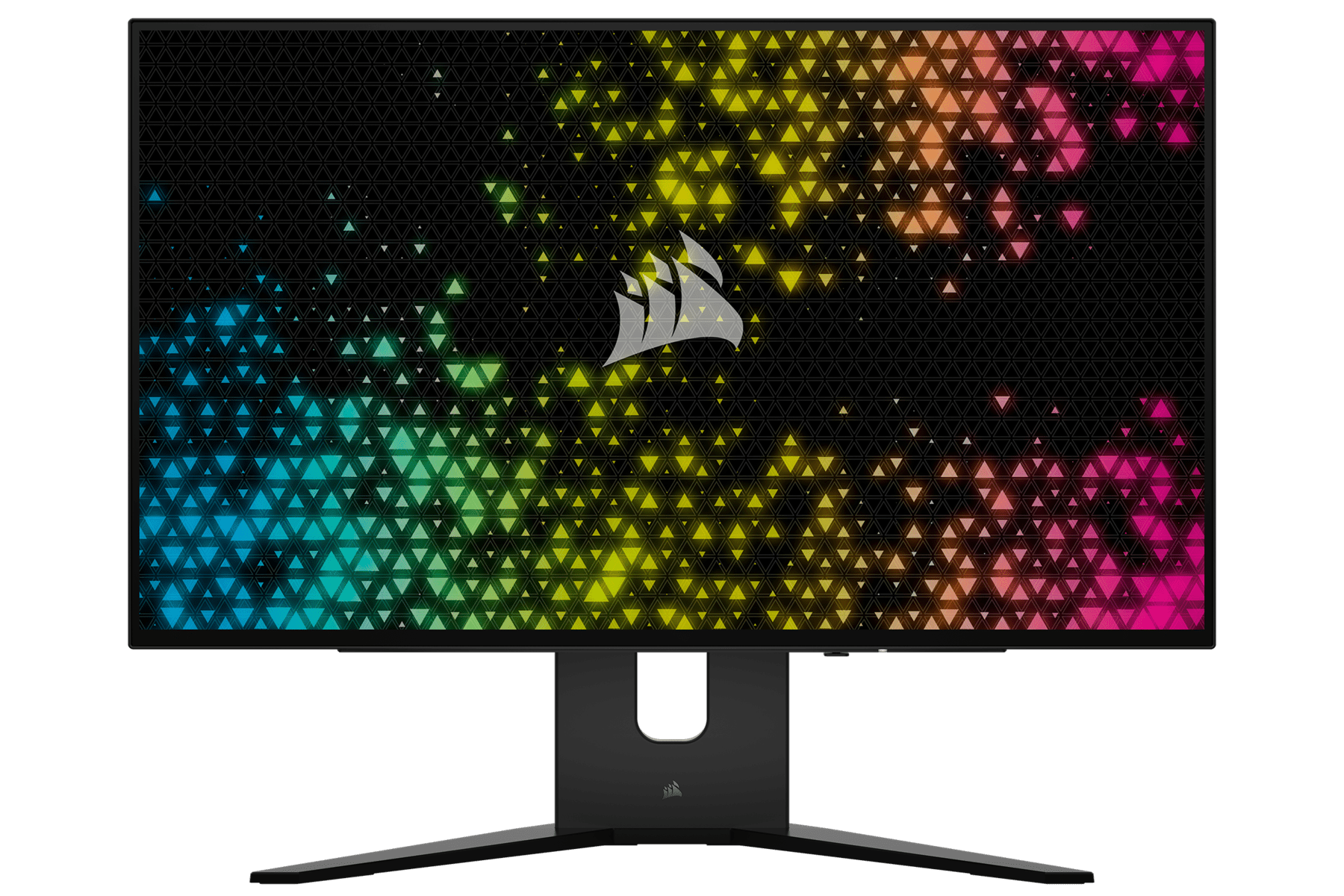
Pros
-
High 240Hz refresh rate -
Near-instant 0.03ms response time -
Stunning OLED visuals -
Ideal resolution for RTX 4070 Super
Cons
-
Expensive -
Not as bright as LED
Starting things off with the wildly impressive Corsair Xeneon 27QHD240. As one of the best 1440p monitors available, it is a natural fit for the 4070 Super. This GPU performs exceptionally well at this resolution and should be great if you’re looking to make full use of that 240Hz refresh rate in competitive titles. One of the defining features of the 27QHD240 is the OLED panel. OLED gaming monitors are becoming more popular as time passes by, with so many currently in the pipeline.
The 27″ screen size fits the resolution well and isn’t overwhelming for most desktop users. The 0.03ms response time helps eliminate ghosting and keeps the visuals smooth alongside AMD FreeSync Premium support and G-Sync compatibility. This is also an HDMI 2.1 monitor with the addition of DisplayPort 1.4 and USB-C 3.1 connectivity, so it’s nice and versatile.
The OLED panel does add to the expense, but it is hard to beat for gaming and content consumption. You get infinite contrast with deep blacks and a wide 99% DCI-P3 color gamut for crisp visuals with vivid colors. If you want to read more, be sure to check out our Corsair Xeneon 27QHD240 review.
Best ultrawide gaming monitor for RTX 4070 Super: Alienware AW3423DW

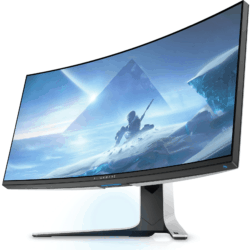
144Hz (DisplayPort) Or 85Hz (HDMI)
Pros
-
Appealing Nano-IPS panel -
Wide viewing angle -
Good for immersive gaming -
High resolution
While there are some great ultrawide gaming monitors out there like Alienware’s AW3423DW, we figured that we’d pick something a little bigger for gaming on your 4070 Super. This display is a little bit older, but it still holds up as one of the best 38″ ultrawides on the market. The RTX 4070 Super is a solid performer and will help facilitate gaming on this 21:9 monitor. As well as being a great pick for productivity, the AW3821DW is top-notch for gamers that enjoy immersing themselves in their favorite games.
Many 21:9 ultrawide monitors are 34 inches, but the AW3821DW takes that up a notch at 38″ and the resolution is also increased to a fairly unusual 3840×1600. That makes for extra crisp visuals and more screen real estate to play with. It’s got an IPS panel, which makes for great color recreation and a much-needed wide viewing angle. While it only caps out at 144Hz, this is suitable for the 4070 Super at this resolution.
We were understandably impressed when we conducted our Alienware AW3423DW review. Among all the high-quality specs, you even get Nvidia G-Sync Ultimate to more or less guarantee smooth gaming performance on this panel’s 144Hz refresh rate.
Best 4K gaming monitor for RTX 4070 Super: ASUS ROG PG32UQX

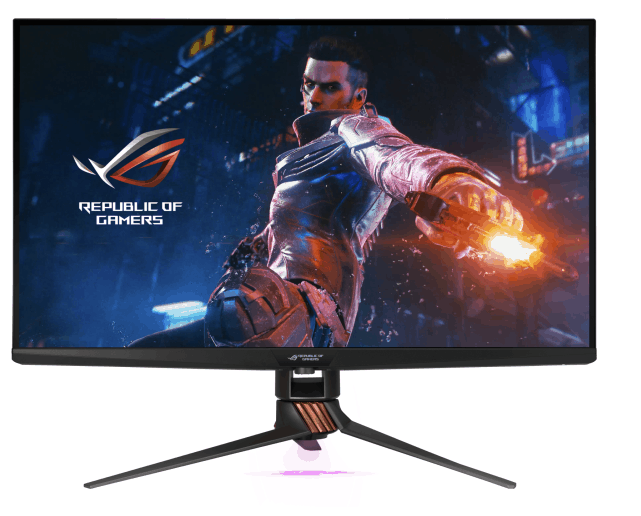
Pros
-
Bright 1400-nit mini-LED panel -
4K resolution at 144Hz -
Full Array Local Dimming -
Nvidia G-Sync Ultimate support
Cons
-
Very expensive -
Slower response time
If you want to go all out and future-proof your setup with a 4K monitor, it’s hard not to recommend the ASUS ROG SWIFT PG32UQX we reviewed. This high-end monitor sits at an eye-watering price, but the visuals are hard to beat if you’re looking for a bright display. This is thanks to the mini-LED monitor technology, which sets to apart from the rest in terms of HDR performance. It’s a large 32″ 4K screen, so this quality can be fully appreciated. You get Full Array Local Dimming (FALD) with 1,152 zones for bright and vivid colors, even more so thanks to a 98% DCI-P3 color gamut.
In terms of gaming, it has a 144Hz refresh rate – more than enough for current-gen 4K performance on cards like the RTX 4070 Super which can output decent raw performance at this high resolution, and it will be even smoother with DLSS 3.5 tech. One downside is the response time, sitting at just 4ms, when we like to expect 1ms or quicker for gaming. On the bright side though, we’d only recommend picking up this monitor if you’re looking for immersive experiences rather than something like competitive FPS gaming where response time is key.
Best value gaming monitor for RTX 4070 Super: LG UltraGear 32GP850-B

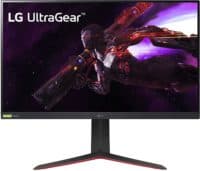
Pros
-
Excellent value for money -
Large 32″ screen size -
1440p resolution ideal for 4070 Super -
180Hz OC model available
Cons
-
HDR performance is lackluster
Moving on to the topic of best value for money – and we’ve sort of picked out a double-header from LG. You don’t have to pay ridiculously high prices to secure an impressive gaming monitor, and LG have proven that with this 1440p gaming monitor. Again, this resolution is the best to target for the RTX 4070 Super and we’d fully recommend it if you want to make the most out of your gaming monitor’s specs.
The standard 32GP750-B model is a 165Hz monitor, but the 32GP850-B version offers a possible refresh rate overclock of 180Hz and rapid 1ms response time; this monitor’s gaming performance is nothing to complain about. It does only clock in with a DisplayHDR 400 rating though, which is pretty much the bare minimum for HDR.
Both AMD FreeSync and Nvidia G-Sync compatibility is available to help combat screen tearing – which is important given the high refresh rate here. Given that the basic 165Hz model is under $300 at the time of writing, it’s a steal in our eyes. However, the overclocked version we tested in our LG UltraGear 32GP850-B review is also a solid option if you don’t mind paying a little extra.
How we test & choose
Many of the monitors we recommend here at WePC are put through our rigorous testing process. This is displayed in our hands-on gaming monitor reviews in which we take good care of and carefully measure the specs of these displays to track down the best. We use up to date tools to test color accuracy, panel uniformity, and responsiveness – as well as thoroughly testing the build quality and gaming performance in general.
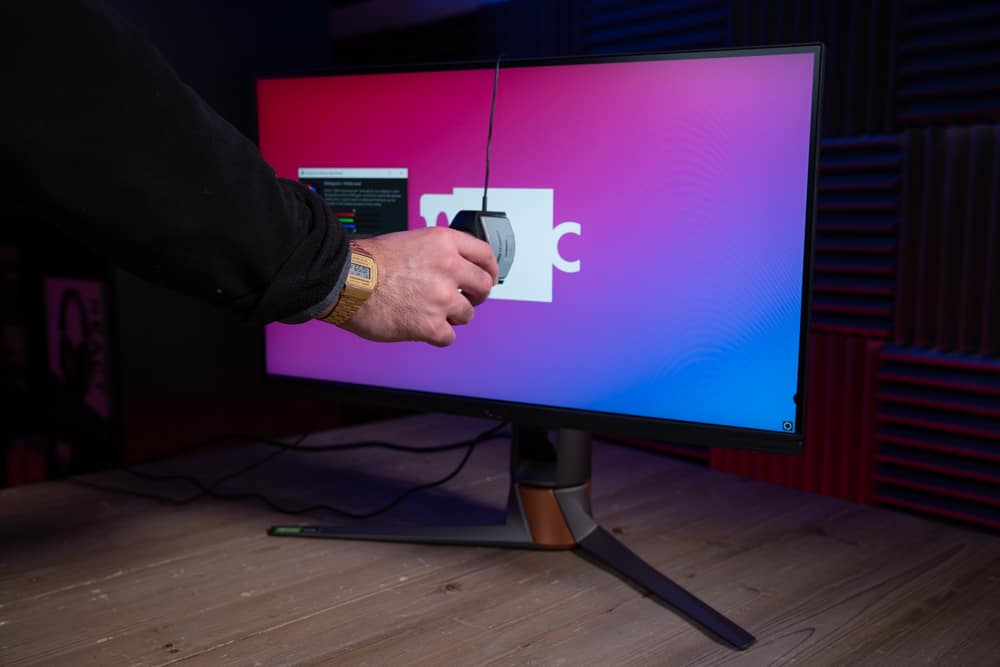
If you want a full rundown on our monitor testing process, feel free to head on over to our dedicated ‘how we test‘ page. In the case that we haven’t been fortunate enough to get a hands-on review with a gaming monitor, we are always sure to do more than enough research to give a recommendation.
Things to consider for an RTX 4070 Super gaming monitor
Before you go ahead and buy a new monitor to compliment your RTX 4070 Super, it may be worth thinking about a few things. All of the categories below relate to displays in general and are particularly important if you’re thinking about gaming.
Resolution
First up is resolution – the higher the resolution, the crisper the visuals, and it gives you more screen real estate to work with. We’ve already discussed that the RTX 4070 Super is catered for maxing out your favorite games at 1440p. Even in demanding titles, the inclusion of technology such as DLSS 3.5 helps boost framerates higher than ever for a mid-range GPU. If you want the very best performance levels though, you can drop down to a competitive 1080p monitor, even something as high as 360Hz.
Other resolutions worth considering include 4K (especially for work and casual gaming), and ultrawide resolutions if you want something to replace your dual monitor setup.
Refresh rate
For the uninformed, the refresh rate of a monitor is how many times a second the display refreshes, measured in hertz. The higher the refresh rate, the better. For gaming, we’d recommend 144Hz and above for a smooth gaming experience. In relation to this, variable refresh rate technology such as FreeSync is important to help sustain this smoothness and avoid noticeable screen tearing.
Response time
Often paired with refresh rate as a key gaming spec, the response time is how quickly the pixels on your screen change color. As you may imagine, the quicker the better, and many gaming monitors boast a 1ms response time or lower, especially in the case of OLED with response times as low as 0.03ms. A slow response time can result in ‘ghosting’ – where your colors are noticeably lagging behind, forming a smudge-like effect.
Panel type
There has been plenty of debate regarding the panel technology embedded in gaming monitors. TN vs IPS vs VA has always been a discussion, and IPS is definitely the go-to for all-round gaming and productivity these days. That being said, the likes of OLED and mini-LED are overshadowing it. For high-end gaming we’d say that these two are the current best, whether you prefer the responsiveness of OLED or the bright visuals of mini-LED.
Best monitor for RTX 4070 Super FAQs
What resolution is best for the RTX 4070 Super?
Nvidia place the RTX 4070 Super well within the 1440p gaming region, so that’s what we’d recommend for this GPU. Regardless, we give you a wider range of options to choose from.
Do I need a gaming monitor for the RTX 4070 Super?
The RTX 4070 Super is a powerful graphics card and a solid pick for gaming. If you want to make the most of it, a gaming monitor with suitable specs is definitely recommended.
Final word
There you have it, some of the very best on display. The RTX 4070 Super is a refresh of the original RTX 4070, offering improved performance. We’d recommend sticking to 1440p for a mix of strong gaming performance and high-fidelity visuals, but 4K and ultrawide are good alternatives. That being said, dropping down to 1080p is always worth considering if you’re set on competitive gaming.






